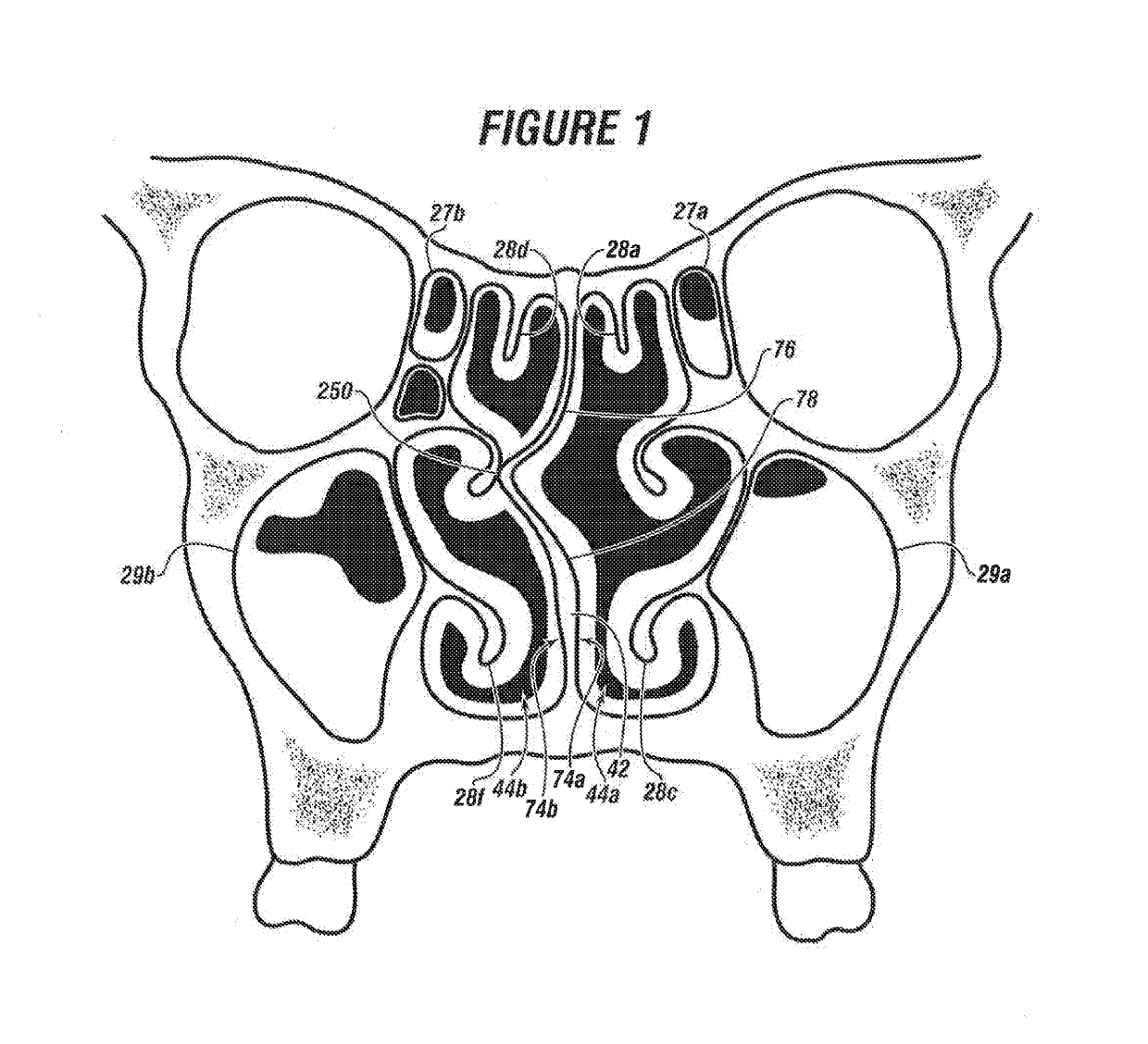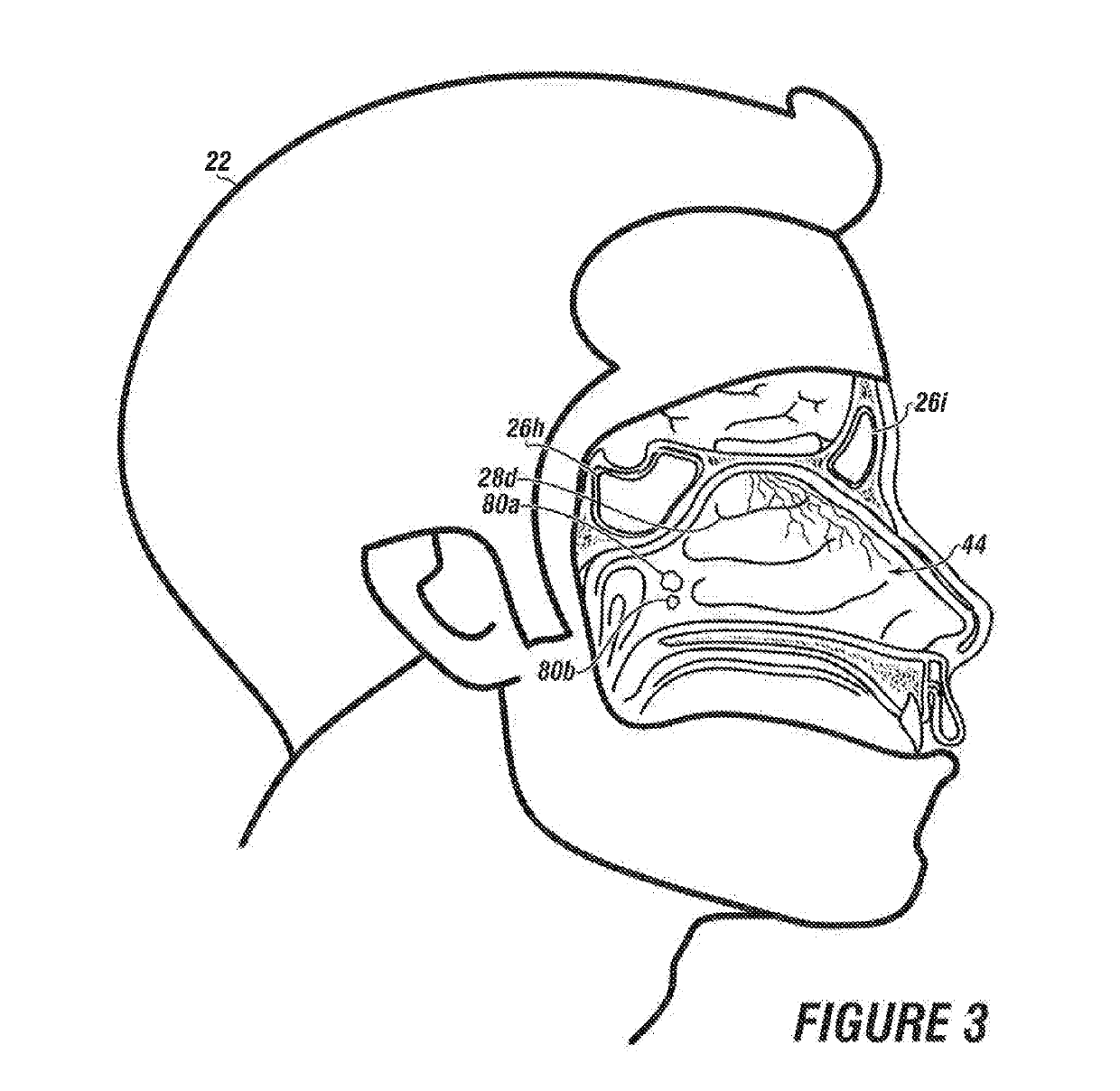System & method for matching the results of a CT scan to a nasal-sinus surgery plan to treat migraine headaches
a technology of ct scan and surgery plan, applied in the field of migraine headaches, to achieve the effect of reducing or eliminating the root cause of persistent headaches
- Summary
- Abstract
- Description
- Claims
- Application Information
AI Technical Summary
Benefits of technology
Problems solved by technology
Method used
Image
Examples
formulation example 2
(j)
[0201]As an example, the formulation can be 68% weight percent of phenylephrine, 20 weight percent of a tetracaine, 2 weight percent of menthol, 5 weight percent of tea tree oil, and 4 weight percent of pine oil and 1 weight percent of camphor.
(k) Formulation Example 3:
[0202]As an example, the formulation can be 40 weight percent of phenylephrine, 50 weight percent of oxymetazoline, 3.5 weight percent of eucalyptus oil, 1.5 weight percent of rosemary oil, 3 weight percent of lavender oil, and 2 weight percent of thyme oil.
[0203]In embodiments, the topical local anesthetic and decongestant may include from 10 weight percent to 20 weight percent of a nasal steroid, such as triamcinolone acetonide.
formulation example 4
(l)
[0204]As an example, the formulation can be 60 weight percent of phenylephrine, 30 weight percent of a lidocaine and 10 weight percent of triamcinolone acetonide.
[0205]The method may include inspecting the anesthetized decongested nasal cavity, as shown in box 1300.
[0206]The method may include using an algorithm, to match a proposed medical treatment, plan to treat at least one of: a nasal septum, at least one sinus cavity, and at least one turbinate of the patient with the computer tomography scan and the plurality of answers to the completed headache questionnaire, as shown in box 1400.
[0207]The method may include installing topical local anesthetic and decongestant onto at least one turbinate, as shown in box 1500.
[0208]The method may include infusing an anesthetic into the anesthetized decongested nasal cavity of the patient, as shown box 1600.
[0209]In embodiments, the anesthetic is not a topical anesthetic. For example, the anesthetic can be injectable lidocaine HCL 1 weight...
PUM
 Login to View More
Login to View More Abstract
Description
Claims
Application Information
 Login to View More
Login to View More - R&D
- Intellectual Property
- Life Sciences
- Materials
- Tech Scout
- Unparalleled Data Quality
- Higher Quality Content
- 60% Fewer Hallucinations
Browse by: Latest US Patents, China's latest patents, Technical Efficacy Thesaurus, Application Domain, Technology Topic, Popular Technical Reports.
© 2025 PatSnap. All rights reserved.Legal|Privacy policy|Modern Slavery Act Transparency Statement|Sitemap|About US| Contact US: help@patsnap.com



